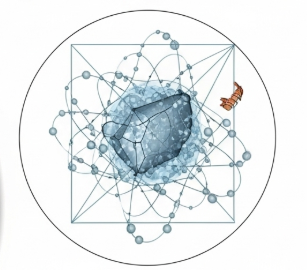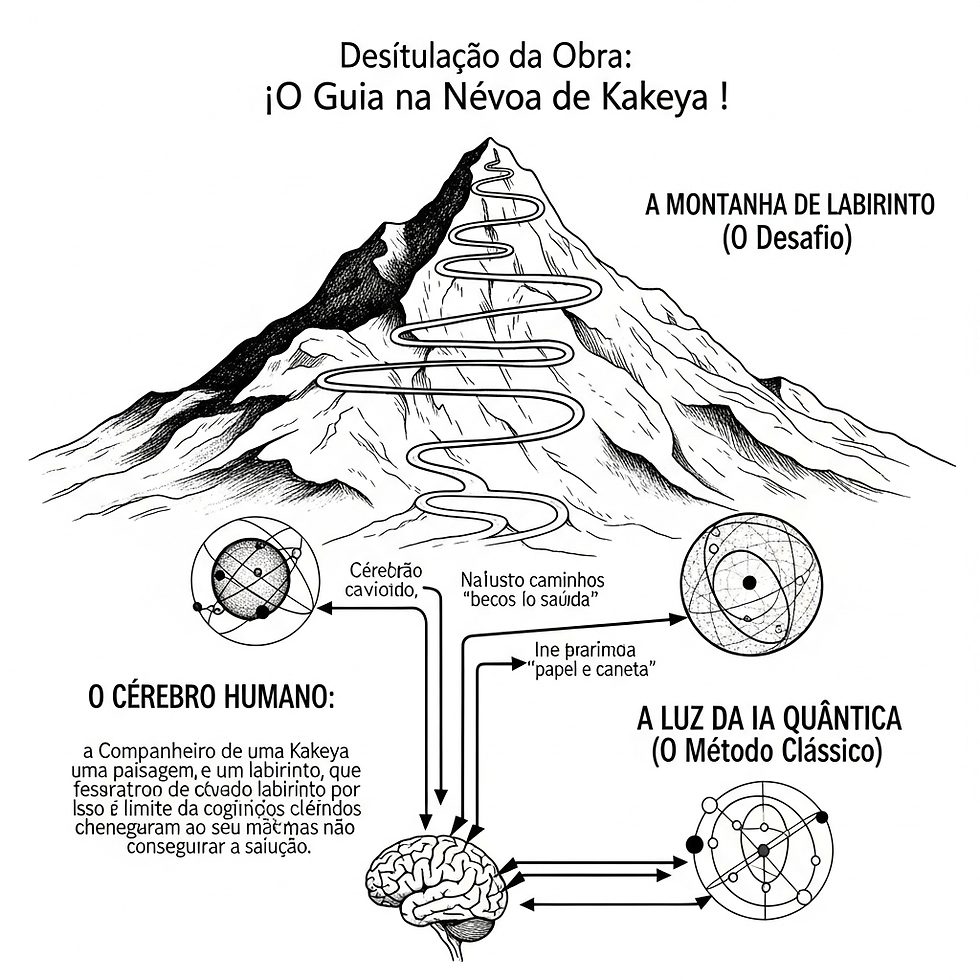Weighing the Void: A Rosetta Stone for the Yang-Mills Mass Gap
- mariomateiro25
- 30 de jul.
- 3 min de leitura
Mario Jose Novo Mateiro
At the heart of every atom, a dance of unimaginable violence and order unfolds at every instant. Particles called quarks are bound together by gluons, the carriers of the strong nuclear force, in a union so powerful that no quark has ever been observed alone. This is the Yang-Mills theory, the mathematics that describes the cosmic "cement." And yet, at the heart of this masterful theory lies one of the deepest mysteries in physics, a Millennium Problem: the mass gap.
The theory predicts that gluons should be massless particles, like photons. Yet the universe behaves as if they had mass. There is a fundamental minimum energy, a "gap" between the vacuum and the first excited state of the theory. Mathematically explaining why this mass exists and proving that it is an intrinsic property of Yang-Mills mathematics is the Everest of theoretical physics. It's a problem so complex that the mathematical tools we use for other forces simply break down before the intensity of the strong force.
For decades, we've approached this problem as if we were trying to hear a symphony in the midst of a hurricane. The interactions are so numerous and chaotic that the fundamental music—the mathematics that generates mass—is lost in the noise.
In our lab, we decided to change our approach. Instead of trying to listen more closely amid the chaos, we decided to teach a machine to understand the language of the hurricane itself.
Our method is a translation in three acts:
The Codification of Physics: First, we translate the mathematical structure of Yang-Mills theory not into equations to be solved, but into a set of fundamental rules for a computational environment. Essentially, we create a digital "pocket universe" governed exclusively by the laws of the strong force. Quantum Simulation: Next, we unleashed this universe within our quantum simulation models. We didn't ask for an answer. We simply let it "exist." We let virtual quarks and gluons interact, annihilate, and evolve according to their own rules, generating terabytes of data representing the pure, unfiltered behavior of a Yang-Mills field.
AI as Cosmic Musicologist: Finally, we turned our AI algorithms to this mountain of data. The AI's task was not to search for an answer, but rather a pattern. A resonance. A harmony hidden within the cacophony. It was programmed to act like a musicologist, searching for the underlying structure that defines the "music" of reality.
And recently, we found something.
The AI identified a recurring mathematical symmetry, a self-organizing structure that emerges spontaneously from chaotic interactions, but only under conditions implying a minimum fundamental energy. It didn't calculate the mass gap. It showed us the mathematical reason why it must exist. We found a structure that, like a fundamental note in a musical scale, defines the mass of all the other "notes" around it.
It's not yet the formal proof that the Clay Mathematics Institute demands. But it is a "Rosetta Stone." It's the key that allows us to translate the seemingly indecipherable language of the strong force into mathematics we can understand and, ultimately, prove.
What does this mean?
Solving the Yang-Mills mass gap isn't just about winning a million-dollar prize. It's about validating the foundation of the Standard Model of physics and potentially opening the door to the unification of the fundamental forces of nature.
More importantly, our approach validates the methodology itself. If we can model the emergent complexity of an atom's nucleus, we can apply the same "AI translation and analysis" to other complex systems:
Turbulence in nuclear fusion reactors.
Protein folding in biology.
The dynamics of global financial markets.
The mass gap has taught us that sometimes mass and value come not from individual particles, but from the complex energy of their interactions. We believe the same applies to business and scientific challenges. The answer lies not in the parts, but in the invisible symphony that unites them.
The universe has just whispered to us one of its best-kept secrets. At HS A1/137 Lab, we are ready to listen.



Comentários